Formula 1 Drivers Are Getting Younger Than Ever—but Is That a Good Thing?

As the 2024 Formula 1 season takes a short break between last Sunday’s Monaco Grand Prix and the Canadian race in Montreal next weekend, some of the drivers might try to rest and recuperate a little more than others. Being the two oldest drivers in the field, Fernando Alonso (shown in the opening image ahead of McLaren’s Oscar Piastri at the 2024 Bahrain Grand Prix) and Lewis Hamilton, ages 42 and 39, respectively, might be excused for needing an extra nap or two before the gladiatorial jousting begins again in this grueling 24-race gauntlet.
In a series where mental and physical reactions must be immediate and razor sharp, and the wisdom of experience is balanced against the need for sudden moves to negotiate a passing maneuver at near 200 mph, the ideal age for a racing driver has again taken center stage this season. After decades in which the average age of a Formula 1 racer moved steadily lower, this year sees teams drawing from both ends of the spectrum, with one of the youngest participants ever and a handful of the oldest in modern times lining up together on the starting grid.
More from Robb Report
Car of the Week: The Iconic Ferrari Testarossa Defined the 1980s, and This One Is up for Grabs
We Drove a Trio of Classic Ferraris, and Now They're up for Grabs
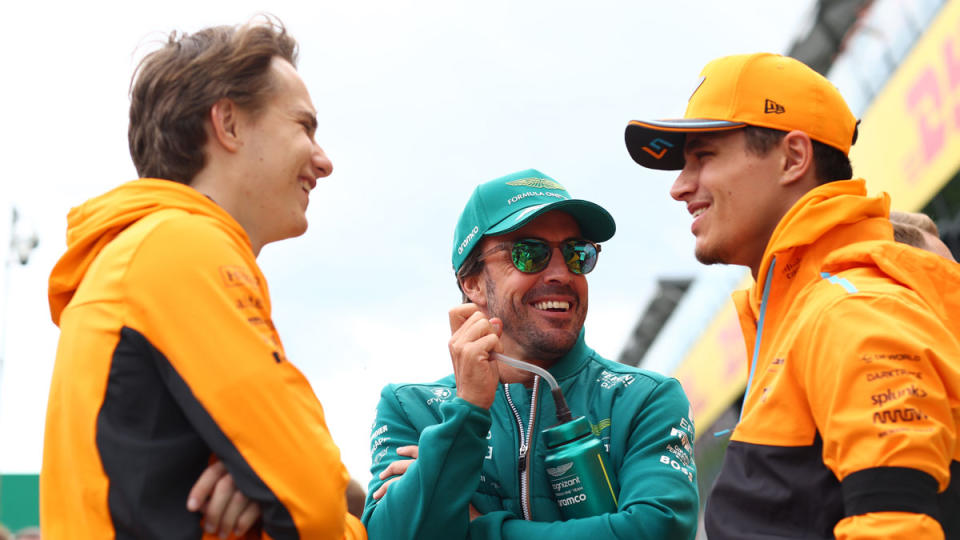
Step back a moment to the first Formula 1 race: The average age of the 26 drivers in that 1950 British Grand Prix was 35. The youngest was 29, the oldest was 53. This year, the average age is 29, with the oldest being 42 and the youngest 23 (not counting an 18-year-old in one race). But while 13 of today’s drivers are in their 20s, there was only one in 1950, with six in their 40s, and four in their 50s.
During Formula 1’s first decade, it was common to see muscular, heavy, older drivers, as both the cars and the tracks required a specific morphology and mentality to stay in the game. Racing on tracks that often featured near-vertical banks and miles of straights and blind corners, the cars had huge, powerful engines that eventually developed more than 1,000 hp. It took years of competing in the lower categories of racing for drivers to build up the sufficient experience, and even physique, to reach the top level.
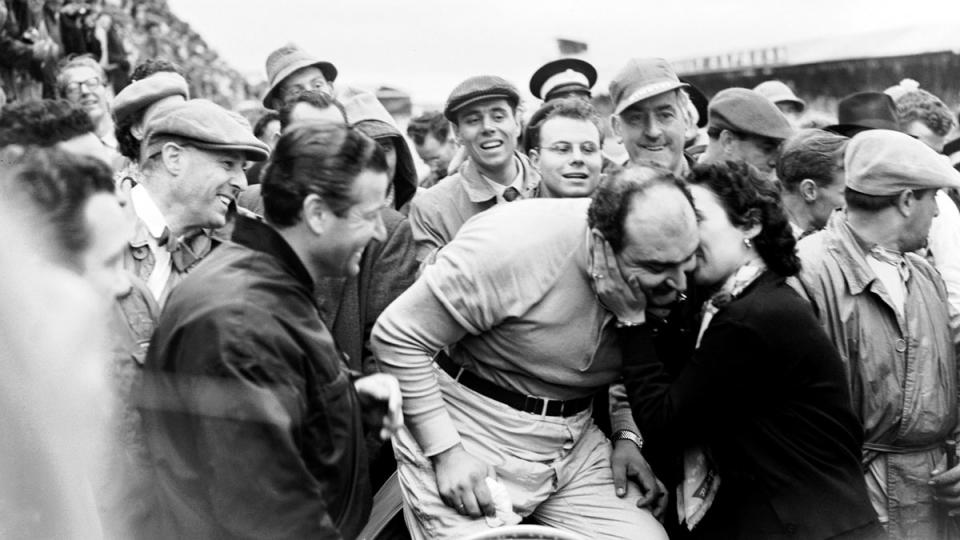
Today’s hybrid cars have downsized turbo engines—with electric energy-recovery systems—and a dependency on aerodynamic downforce; their complex electronics are controlled through buttons and switches on the steering wheels that have made piloting these machines more like playing a video game. And more than ever, as we saw at the recent Monaco Grand Prix, the job is about conserving the car’s hybrid energy and its tires, rather than racing flat out.
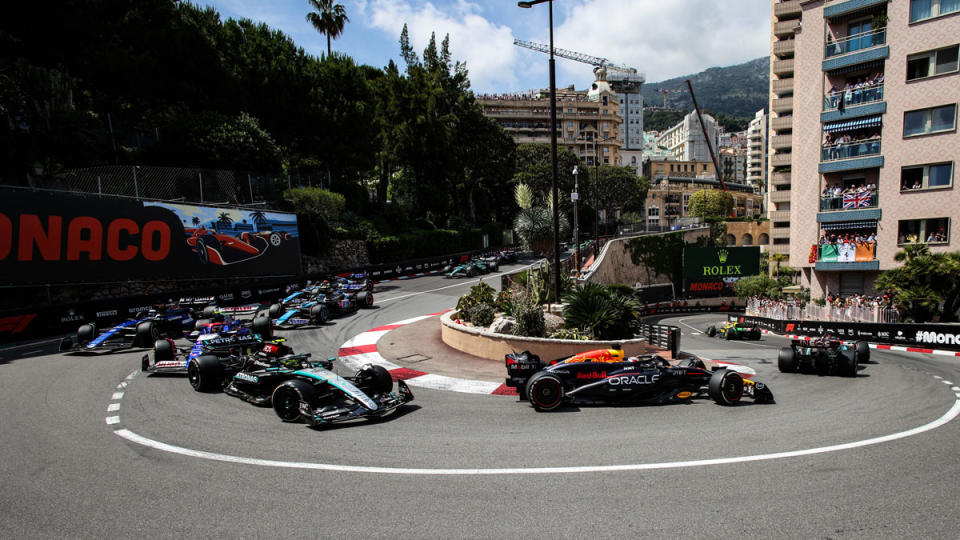
For Jean Alesi, a former Formula 1 driver and now the president of Circuit Paul Ricard in the south of France, this is precisely why he believes that age and experience—not youth—are more valuable in current Formula 1 competition.
“Today, it’s more an advantage than a disadvantage because—apart from qualifying, of course— for the race, they’re obliged to keep up tire performance by running in a stable window,” says Alesi. “They’re not going at 100 percent of what the machine can give. In Monaco, during the race, they were running eight to ten seconds slower than in qualifying. So it’s all about management; and when it’s about management, it’s experience that counts.”
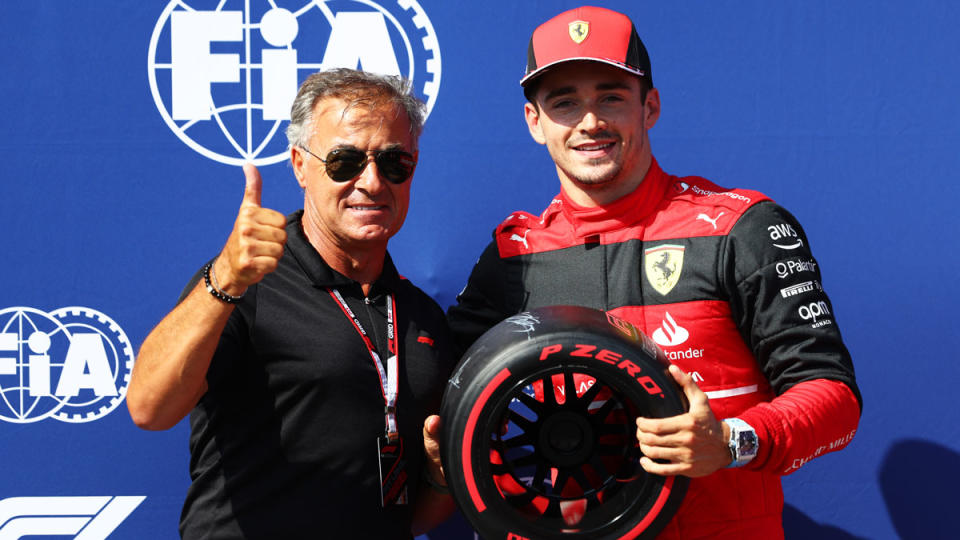
So why is it that a sudden scramble for young drivers has again taken hold at the same time as the rehiring of many veterans like Alonso, Hamilton, and Nico Hulkenberg? (Concerning Hulkenberg, for example, he will soon be 37 years old and has been swooped up by Audi-Sauber for next season.) Alesi thinks part of it has to do with what’s fashionable at any given moment, and the current trend was kick-started after the third race of the season. Ferrari driver Carlos Sainz was diagnosed with appendicitis after running the first two practice sessions of the Saudi Arabian Grand Prix, and the team turned to an 18-year-old Formula 2 driver, Oliver Bearman, as a replacement.
With just a single practice session followed by qualifying, Bearman, who is a reserve driver for both Ferrari and Haas, lit the imagination of both fans and team directors when he finished the race in seventh position. In so doing, he became the youngest driver ever to score points in their first Formula 1 race, as well as the youngest to race for Ferrari.
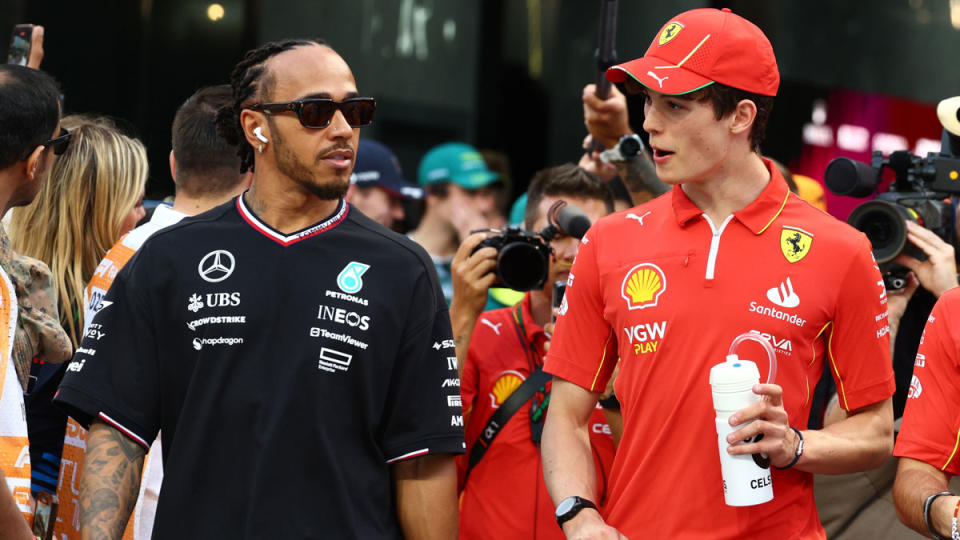
His success led to several team directors looking to sign others in that age group, including another Formula 2 competitor, 17-year-old Andrea Kimi Antonelli. As the Mercedes squad is losing Hamilton next year, team principal Toto Wolff has not hidden his interest in Antonelli, likely hoping to avoid missing another opportunity as he did with the reigning world champion, Max Verstappen, a few years back.
In 2015, the then 17-year-old Verstappen became the youngest Formula 1 driver in history when he signed with Scuderia Toro Rosso before joining the parent Red Bull team in 2016. A portent of things to come, he won the first race he participated in with Red Bull. Now, age 26, Verstappen has claimed the last three drivers’ titles, and is again leading the series this season. Verstappen is the apogee of the movement towards increasingly younger drivers. After Verstappen’s early entry, the Fédération Internationale de l’Automobile (FIA), Formula 1’s governing body, set an age requirement of 18 to be eligible to compete in the series.
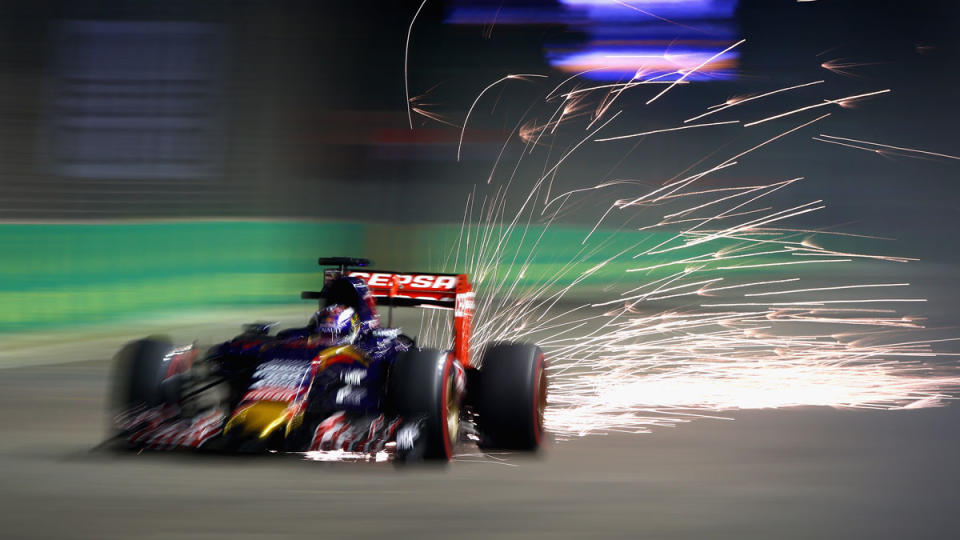
Clearly, though, team directors do not agree on what gives them the most bang for their buck. This season, experience seems to be winning out, as there’s not a single rookie. It’s only the second time in Formula 1 where that’s the case, the previous being the 1969 season. But Bearman’s fiery performance acted as a reminder of the excitement and raw talent that an untried, young driver can bring. Before Verstappen, only nine teenagers had raced in Formula 1, all at age 19.
Yet according to Alesi, there’s another guiding factor in the hiring of new drivers these days. “If you look at all the drivers who are on the verge of F1, like Antonelli at the moment, the managers are the team principals,” he said. “But I don’t think that’s right,” he adds. “Instead of looking at Formula 3 and Formula 2 and letting the youngsters do their thing . . . taking the driver who has the right result, we’re speeding things up and saying, ‘Ok, we’ve already decided on this driver and signed him up for 20 years. And then we have the income from them too.’”
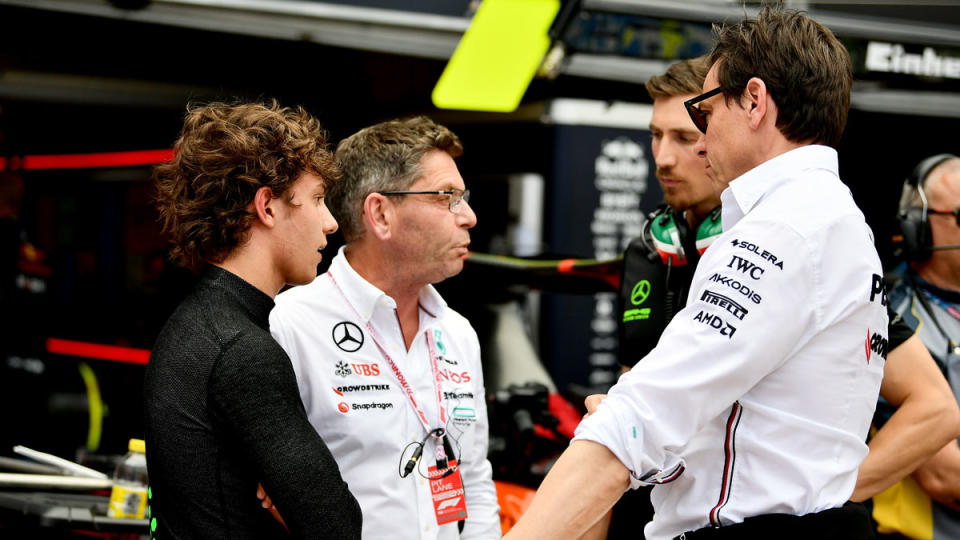
None of the last three Formula 2 champions reached Formula 1 right after winning the title. Only McLaren’s Oscar Piastri finally made it after waiting a year for a seat to become available. Jacques Villeneuve, the 1997 Formula 1 world champion, says that by signing teenagers, Formula 1 does not give them time to mature as people, or to grow strong in the head, which requires being “left to take care of yourself and drag yourself through the difficulties.”
In a rare moment of reminiscing about his early start, Verstappen told journalists in Monaco last week that there are many areas in which a teenage rookie has to grow. “For me, personally, the biggest one was actually doing a full-race distance,” he said. “In F3 at the time, you did 35-minute races. So there’s a lot more involved. Looking after your tires is a big part of it. These tires are so particular and sensitive compared to [those in] some other categories.”
A young driver who seems to be finding his way rapidly is the aforementioned Bearman. Prior to the race in Imola, the Haas team ran Bearman during a free practice session, measuring his abilities as a replacement for Hulkenberg next year.

“Again, he’s done another very, very good job,” said Haas team director Ayao Komatsu, who had also used Bearman during practice at the Mexico Grand Prix last fall. “He understands what he needs to deliver each session, each run, each lap. And he’s able to absorb the information so quickly, either from himself from the previous lap or the engineer’s feedback.”
Komatsu added that if Bearman continues to perform this well, then “it’s difficult to ignore” him for taking over Hulkenberg’s seat. He also said, however, that Hulkenberg’s departure will be “a big loss” for them. But what are the limits of older drivers, and when do they know to retire? Much of the series’ history has been written by what are today considered racers of advanced years. Juan Manuel Fangio won his last of five championships at the age of 46. In 1993, Alain Prost secured his fourth and final title at age 38, and Nigel Mansell was 39 when he took his first and only drivers’ title in 1992, then returned to the series two years later to win a race at age 41. Then there’s Mario Andretti, who won his first and only Formula 1 title in 1978 at age 38. He continued his racing career elsewhere until age 60.

“When I started out, you had to be 21 to race professionally,” Andretti tells Robb Report, adding that he and his twin brother, Aldo, altered the birthdate on their drivers’ licenses to appear eligible. “Today, you can race professionally when you’re 15 or 16 years of age.”
At present, future Formula 1 drivers often begin racing go-karts at the age of seven or less. Michael Schumacher started karting when he was four years old and went on to win seven Formula 1 titles. He didn’t quit for good until he was 43.

Aston Martin’s Alonso attributes his own longevity to a new diet and training approach. Medical checkups before the current season showed that he is in better shape now than when he was in his mid-30s. Alonso has stated that he could theoretically race in Formula 1 until his late 40s and beyond, but that “you have to give up everything in life . . . Formula 1 needs total dedication.” He admits, “I don’t know if I will be racing until 50, with such a demanding calendar and things like that. Not for the abilities, but because there are other things in life that I’m curious about.”
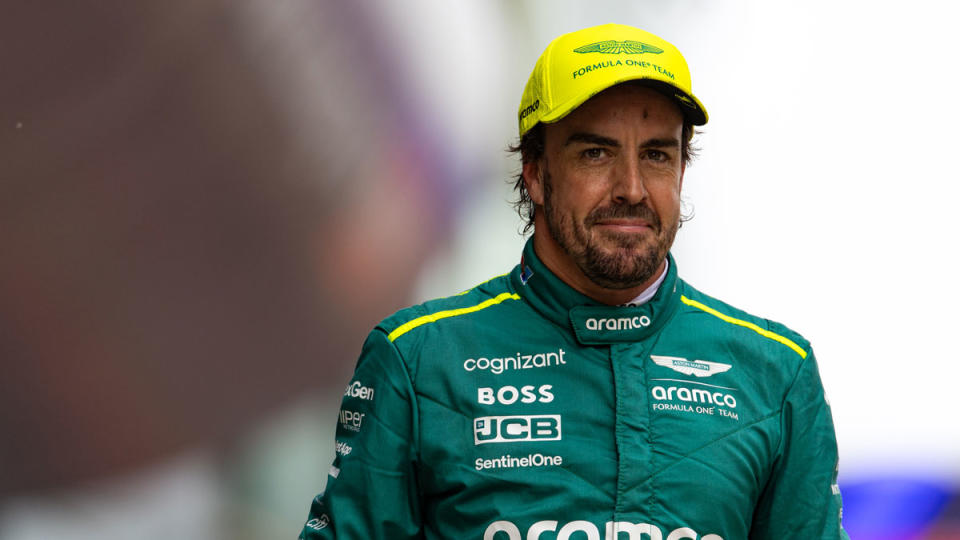
Andretti agrees that a driver would not necessarily lose his speed until his 50s, but notes that maintaining motivation can be the real challenge before that. “It’s about how much satisfaction you get out of driving,” Andretti says. “If you love it, you’ll keep doing it as long as you can.”
Best of Robb Report
Sign up for Robb Report's Newsletter. For the latest news, follow us on Facebook, Twitter, and Instagram.

 Yahoo Sport
Yahoo Sport 






































